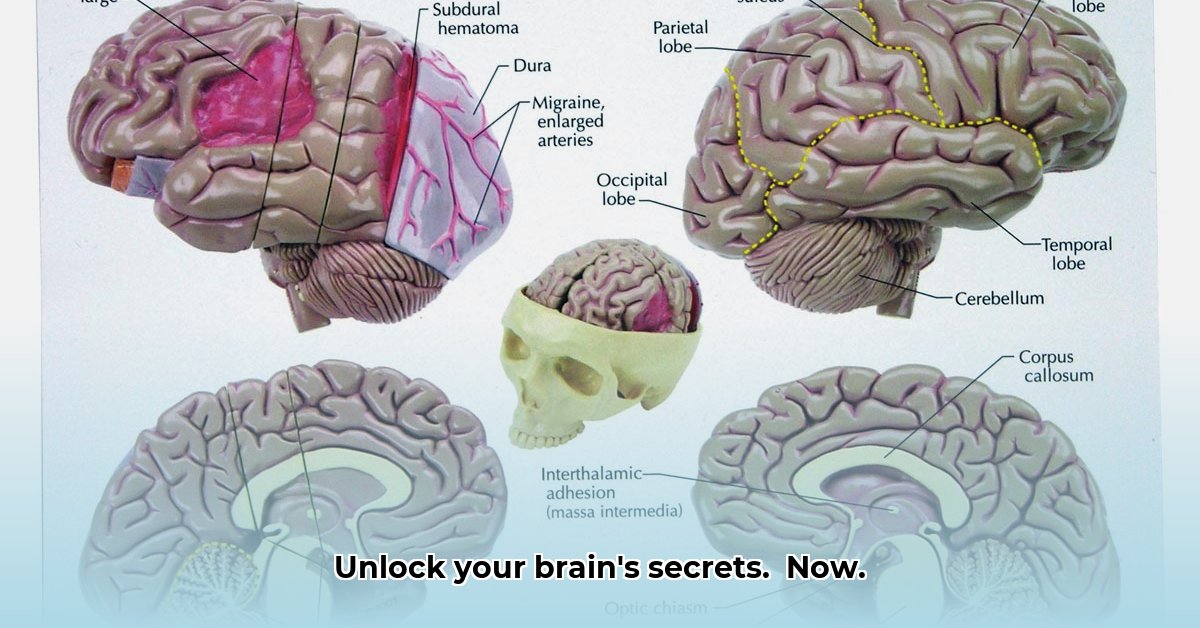
Interactive Brain Models: A Neuroscientific Revolution
Imagine exploring the human brain like Google Earth, zooming in on specific regions, tracing connections, and witnessing activity changes in real-time. This is the power of interactive brain models – a game-changer in neuroscience. These aren't static images; they're dynamic, three-dimensional representations revolutionising our understanding of the brain. But how are these amazing models created?
Peering Inside: The Tools of the Trade
Building these virtual brains requires advanced technology. Think of it like mapping a city: you need street maps (brain structure), traffic cameras (brain activity), and underground utility plans (connections). Similarly, we use several brain scanning techniques:
Magnetic resonance imaging (MRI): Provides a highly detailed anatomical view of the brain's structure – its physical layout, like a detailed city map.
Functional MRI (fMRI): Shows brain activity in real-time, highlighting which areas are active during specific tasks, much like traffic camera footage revealing busy intersections.
Diffusion tensor imaging (DTI): Reveals the brain's "wiring" – the complex networks of white matter tracts connecting different regions, similar to an underground utility map illustrating pipes and cables.
By combining these techniques, researchers create incredibly detailed 3D models of the living brain. This allows for visualization of unprecedented levels of detail. Isn't it remarkable how technology allows us to see the inner workings of the human mind?
From Scan to Simulation: The Model-Building Process
Creating these models isn't simply snapping a few pictures. It's a complex, multi-stage process:
Data Acquisition: High-resolution brain scans (MRI, fMRI, DTI) are acquired, generating massive amounts of data.
Data Cleaning (Preprocessing): Noise and artifacts are removed from the scan data, ensuring accuracy, much like removing stray ingredients before baking a cake.
Brain Region Identification (Segmentation): Brain areas (hippocampus, cortex, etc.) are identified and separated, like sorting different baking ingredients.
Model Assembly: Sophisticated computer algorithms combine the processed data to create the 3D model, the actual baking process bringing all the ingredients together.
Interactive Design: The model is transformed into an interactive platform for exploration and analysis, the icing on the cake, making the result accessible and easy to explore.
This process demands cutting-edge technology and skilled programmers, but the result is a powerful tool transforming neuroscience.
Real-World Impact: How These Models Are Changing Lives
Interactive brain models aren't just for academic research; they're having a real-world impact:
Research: Scientists use them to study brain development, aging, diseases, and treatment effects. How much more effective would treatment be if we could visualise the impact in real-time?
Diagnosis: Clinicians use these models for more precise disease identification and lesion localisation, improving diagnostic accuracy. Could this mean earlier diagnosis and faster treatment for neurological illnesses?
Education: They're excellent educational tools, making complex concepts more accessible and engaging. Can we expect a new generation of neuroscientists inspired by this technology?
Surgical Planning: Neurosurgeons use them for meticulous surgical planning, improving outcomes. What advancements in surgical precision can we expect in the near future?
These applications demonstrate the transformative power of these models, with even more potential applications on the horizon.
Challenges and the Path Forward
While promising, challenges remain: standardizing data formats (for easy data sharing), addressing data privacy and ethical concerns, and ensuring inclusivity in access. However, advancements in artificial intelligence are poised to revolutionize data analysis, leading to even more sophisticated models. Dr. Anya Sharma, Professor of Computational Neuroscience at Stellenbosch University, notes, "AI will be crucial in navigating the vast datasets generated by these techniques, unlocking new levels of understanding."
Software Spotlight: Choosing the Right Tool for the Job
The right software is crucial for researchers. Established packages like Freesurfer and SPM are powerful but can be complex. Newer tools like BrainPainter offer streamlined workflows and dynamic visualization capabilities. Simulation software (NEURON, GENESIS, BRIAN, NEST) models brain function, but each has its pros and cons. The choice depends on research needs, data types, and computational resources. What factors should researchers prioritize when selecting 3D brain mapping software?